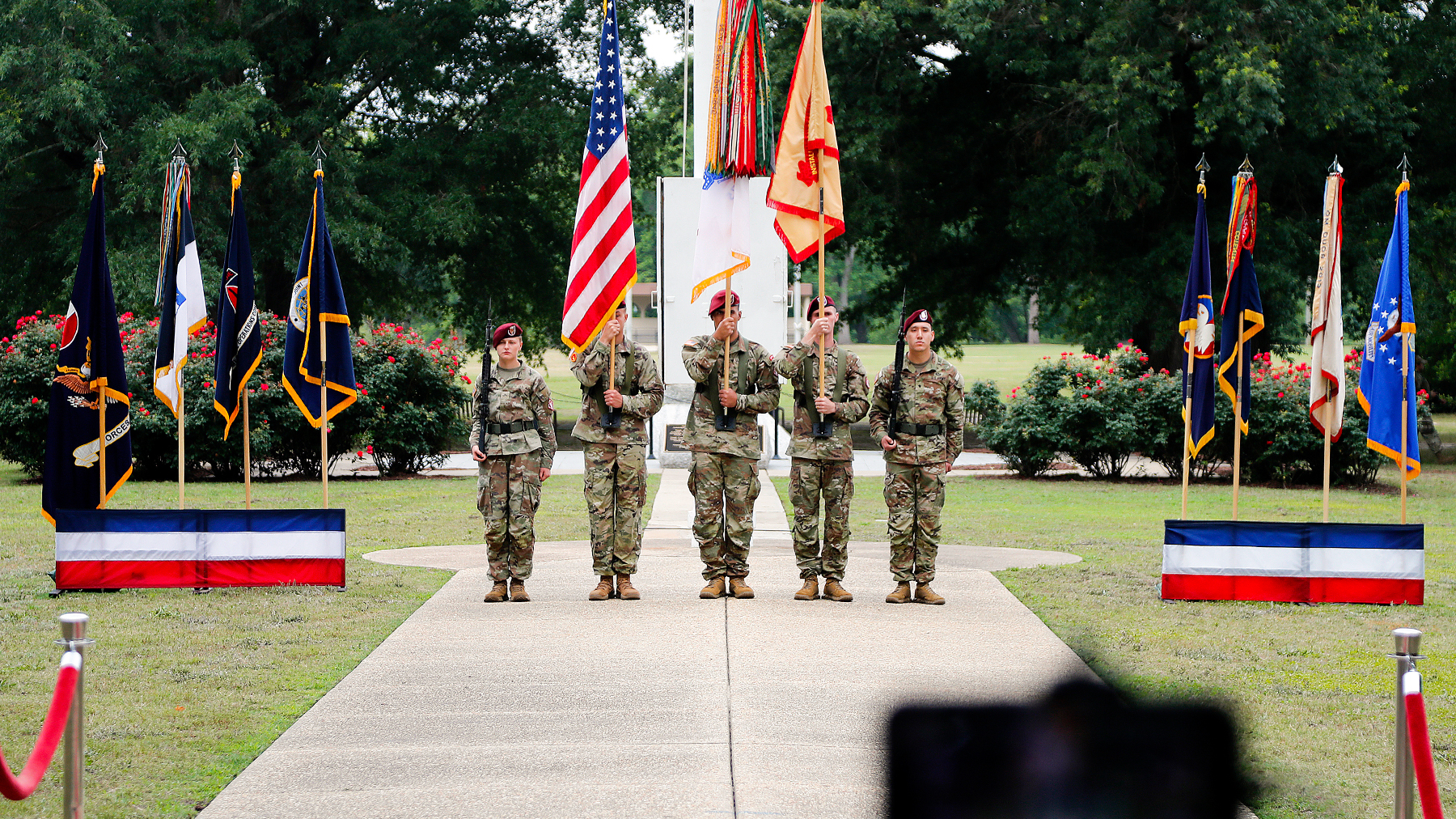Over three and a half years ago, Congress voted by an overwhelming, bipartisan majority (86-14 in the Senate) to strip the U.S. military of names and symbols that glorify and pay homage to the “Lost Cause” of the Confederacy.
It is embarrassing that our country ever had military bases named after men who waged war against the U.S. to defend the institution of slavery and maintain white supremacy.
When Congress passed the 2020 National Defense Authorization Act, there were nine U.S. military bases named for Confederate officers and nearly 800 other examples of Confederate iconography – including flags, statues and building names – on military property. This past September, the Defense Department’s Naming Commission came up with names of real American heroes to replace the Confederate names for military bases. Since then, the Defense Department (DOD) has renamed five bases. In early June, Fort Bragg in North Carolina – named for Confederate General Braxton Bragg – became Fort Liberty. An enslaver in Louisiana, Bragg was known for being a cruel and sadistic general. He was also a failure as a military strategist, suffering repeated losses that hastened the defeat of the Confederacy. There is no reason to honor this man, and every reason to purge our military of all symbols of white supremacy.
The Southern Poverty Law Center has been pushing to remove Confederate symbols from all public property for nearly 10 years, and we recognize the progress that the DOD has made. But the fact remains that it has been nearly four years since Congress’ mandate. The DOD has only until Jan. 1 to finish the job. We call on military leaders and the Biden administration to take swift and decisive action in the coming months. The DOD must be especially firm and decisive, because those defending the legacy of treason and white supremacy are pushing back. On June 9, Florida Gov. Ron DeSantis promised to change the name of Fort Liberty back to Fort Bragg if he is elected president. Former Vice President Mike Pence followed suit. An adviser to Pence defended this position, stating that “Mike’s view is that we should be learning from history, and not trying to erase history.”
The real history
If Mike Pence wants a history lesson, he should listen to historians.
Every serious historian knows that, before and during the war, Confederate leaders explicitly and repeatedly claimed slavery and white supremacy as their cause. This cause dominates Confederate speeches, Confederate secession articles and Confederate state constitutions. Anyone who cares to examine these historical documents will see the Confederate obsession with slavery.
After military defeat, however, former Confederates launched a propaganda campaign to achieve in memory the victory that eluded them on the battlefield. They sought to erase the cause of slavery and the achievement of emancipation, to reestablish white supremacy through Jim Crow laws and other forms of discrimination, and to remake Confederate leaders as American heroes.
This systematic, decades-long campaign led to the construction of statues and monuments across the South and even in far-flung states, including some that were part of the Union. In many Southern cities, such symbols have for many decades been an unavoidable part of the landscape, particularly at county courthouses and in town squares. Last year, the SPLC documented nearly 2,100 Confederate monuments and other symbols still present on public property throughout the U.S.
It was the Confederate propaganda campaign that erased history.
As we look to the military to rid itself once and for all of these pernicious symbols, Congress should take further action and remove the eight Confederate statues that remain in the U.S. Capitol. Like the military bases, these statues represent a propaganda campaign to erase the ideological divide in the Civil War – between slavery and freedom, treason and Union – to remake Confederates as American heroes. And to some extent, this campaign worked. Many defenders of such symbols continue to insist they reflect not white supremacy but Southern “heritage.”
Renaming American military bases to conform to American values is not erasing history. It is, rather, honoring real history.
Our military should look like the nation it represents. Our strength as a nation comes from our diversity and the unity that we build from difference. Military strength, too, comes from diversity and the principle of e pluribus unum – out of many, one. Today, men and women of color make up over 40% of the U.S. armed services. They should not have to endure symbols of white supremacy, and no American should be asked to serve a military that honors treason.
Our commemorative landscape shapes our nation’s values and should reflect and reinforce our commitment to freedom, democracy and justice.
On July 4, 1852, Frederick Douglass warned Americans that our Independence Day would remain a “fraud, deception, impiety and hypocrisy” as long as slavery existed in the United States.
This Independence Day, let us celebrate cleansing our nation of remaining symbols of slavery and white supremacy, drawing encouragement, as Douglass did, “from the Declaration of Independence, the great principles it contains, and the genius of American Institutions.”
Rivka Maizlish is a senior research analyst for the SPLC’s Intelligence Project.
Photo at top: In June 2023, Fort Bragg in North Carolina, named for Confederate General Braxton Bragg, was renamed Fort Liberty. Pictured, an honor guard at Fort Liberty takes part in a ceremony on June 2, 2023, to mark the renaming. (Credit: AP/Karl B. DeBlaker)



